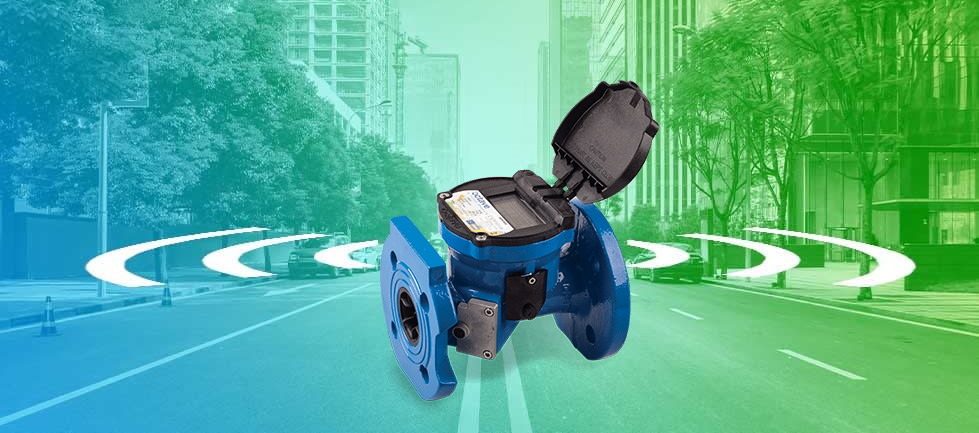
It’s no secret that water is a precious resource. Even though 71% of the earth’s surface is covered by it, it’s still considered limited as the majority is not consumable without treatment. It’s also one of the most jeopardized due to climate change which causes droughts and can be damaging due to flooding.
A vital factor in protecting water is its management, whether it be residential or industrial. Each opportunity to reduce water waste or prevent water contamination is an essential responsibility of water corporations and even the individual residential buildings.
Technology has come a long way to help with water management and preventing water loss. The development of smart water meters is one of the tools at the forefront of the water industry to help measure water consumption and turn the tide on the losses from non-revenue water with smarter detection.
Water meters have come a long way from mechanical to acoustic technology. Now, the next level enhancement of ultrasonic innovation will improve measurement and detection to protect our most valuable resource.
Development of water meters
The development of a water meter was paramount for keeping track of water usage and using this data to plan and identify the demand of residential neighborhoods or industrial companies.
The next step of the water meter evolution needed to address the issue of control and how to manage the water supply. You could say that in the United States or Canada where there is an abundance of water there is little to worry about small leaks, however an undetected leak that lasts for years, can amount to millions of liters per year in loss. In developing countries, every drop is vital and has serious consequences. The issue of undetected small leaks underground needed to be solved.
Developing Smart Water Meters (SMM) was the next step to improve customer satisfaction, improve utility operations, and preventative planning. The main functionality that allows the technology to address these issues is remote data collection. Removing the roadblock of manual readings and monitoring, allows for real time updates which can result in water savings, cost savings, increased revenue, and customer satisfaction.
The most important solution that stems from the technological innovation of smart water meters is the reduction of losses from non-revenue water caused by leaks. Without smart water meters it is almost impossible to detect small leaks that are occurring. Engineers were tasked with adding on a new component to the meter to pinpoint the leaks, allowing for maintenance of pipes to be managed more efficiently.
Challenges facing the industry
The major challenge that engineers faced was the different type of piping being used around the world. From metals to plastic and even concrete to other non-metallic piping each one has its own acoustic frequency. Acoustic technology is able to recognize these discrepancies in the flow and became the main technology to identify and measure leaks in metal piping for years.
The other two challenges that water companies needed to address once they identified the leaks is the management and repair of leaks. Management of leaks can in the way of controlling the water pressure during off peak hours in order to reduce the amount of non revenue water losses. Ultimately this is not a long term solution, and planning to repair the leak should be the top priority. In the case where water utilities are short staffed or under funded or water is inexpensive, managing the leak may be the better option. These issues are not the main scope of this article, however they are important to keep in mind in order to understand the next upgrade of smart meters.
The next generation of innovation in acoustic technology includes enhanced sensors to increase the precision of detecting leaks called ultrasonic.
What is ultrasonic technology and how does it work?
Imagine two equally strong swimmers crossing a river on the same diagonal line, one with the flow and the other against the flow. The swimmer moving with the flow needs much less time to reach the opposite bank.
Ultrasonic waves behave the same way. Two sensors (A and B) send ultrasonic pulses back and forth between two opposite points in the meter. In one direction, from A to B, the measurement is with the flow of the water. In the other direction, from B to A, the measurement is against the flow.
The transit time (t) between Sensor A and B (tAB) (with the flow) and between Sensor B and A (tBA) (against the flow) are measured continuously. For every 100 measurements, the total of the tAB measurements is subtracted from the total of the tBA measurements. The result is a highly accurate average of the flow velocity (mean flow velocity, or Vm): 100tBA – 100tAB = Vm
Once the average flow velocity is known, it is one more easy step to calculate the flow rate of the water moving through the meter: the Vm is multiplied by the area of the cross-section of the water meter chamber.
Benefits of enhanced measurement and detection
Circling back to improving customer satisfaction, improving utility operations, and preventative planning, the advanced technology benefits all three. Water utility companies are empowered with more data that allow them to make smarter management decisions.
Utility operations are the most significant one that is affected by the advanced monitoring and detection. Smart water meters remote access compared to manual readings reduces staff costs and human errors, not to mention valuable time. The data also allows utilities staff to determine the severity of an issue and therefore concentrate on the higher risk issues.
As more smart meters are being installed around the world, we are definitely heading in the right direction to ensure the protection of our water supply.